Making a film is like designing a building, The Brutalist director Brady Corbet tells Dezeen in this exclusive interview.
Corbet, who co-wrote The Brutalist, chose to make brutalism the central subject of the film, which follows fictional Hungarian architect and Holocaust survivor László Tóth as he starts a new life in America, as it worked both visually and thematically.
“It reared its head in the 1950s, and so it was the correct style of architecture in terms of the film’s visual allegory and what it is exploring thematically,” Corbet said.
“[Tóth] is also a character that you know has studied at the Bauhaus in Dessau before it was shut down by the Nazis.”
Corbet argues that in some ways brutalist architecture mirrors the immigrant experience.
“It just so happens that it is a style of architecture that was predominantly being practised by immigrant architects,” Corbet said.
“I felt that the community tends to have the same response to a style of architecture that is unfamiliar to them; it provokes the same feelings in them as it does about their new neighbour coming from a different background.”
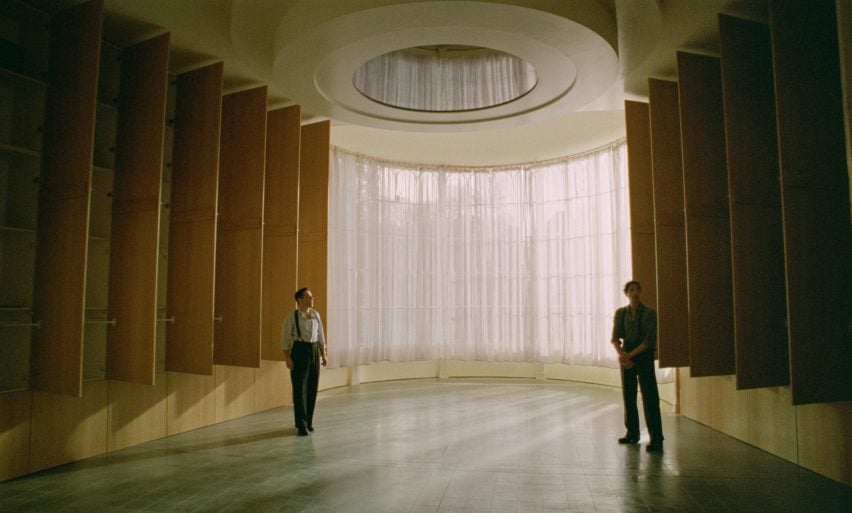
While The Brutalist is set in the post-war years, Corbet believes brutalism is still very relevant today as antagonism towards immigrants continues in the US.
“The instinct is generally to have those buildings torn down and have those people thrown out, especially in this country,” he added.
“And it’s never been more relevant, considering that we had a brief intermezzo before entering into Trump’s second term, which is likely going to be somewhat more effective, unfortunately.”
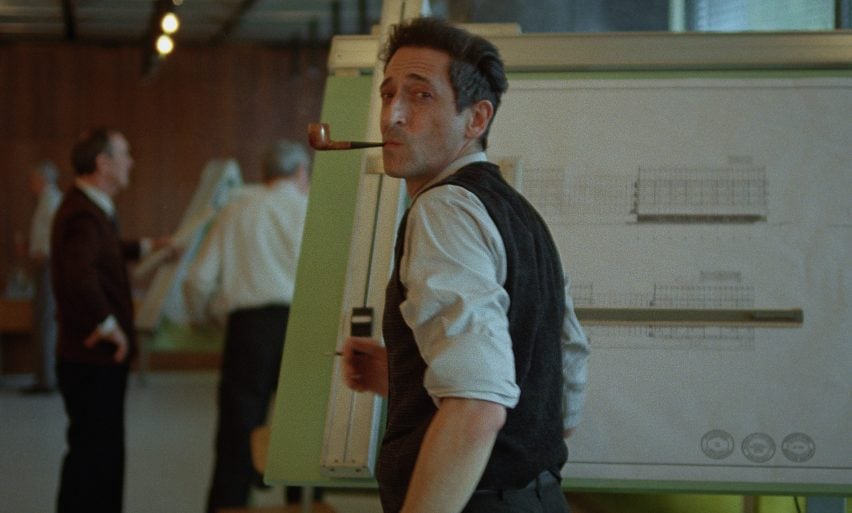
Corbet and co-writer Mona Fastvold wanted to tell the story of an architect partly due to the fact they both had architects in their families.
“I grew up with an architect in my family – John Pfeiffer,” Corbet told Dezeen. “He’s my mother’s brother and lived with us when I was a child in Arizona, while he was attending Taliesyn West.”
“My wife and co-writer’s grandfather was a mid-century designer who did mostly residences in Norway. So we both had architects in the family and had spoken for some time about doing a project on architecture.”
Corbet also feels a kinship with architects, whose work he says is “remarkably similar” to that of a filmmaker.
“You rely on roughly the same amount of personnel to make things come to life – it’s not an option to do it solo,” Corbet said.
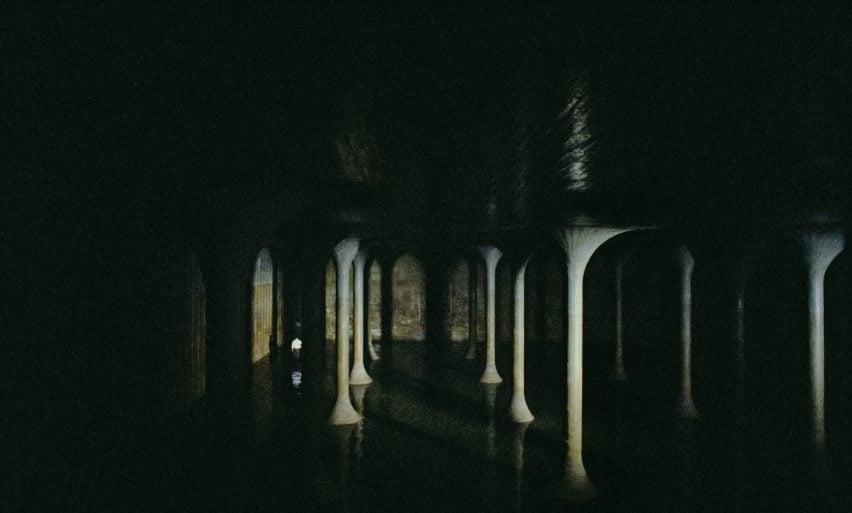
At the centre of The Brutalist is the Institute, a monumental building designed by Tóth, who is played by actor Adrien Brody, for businessman Harrison van Buren, who is played by actor Guy Pearce.
Production designer Judy Becker drew on her own knowledge of brutalism to create the structure, as it wasn’t described in detail in the script.
“There were very specific things in the script, but they weren’t about the exterior design of the building, as much about the things that were incorporated in the building,” she told Dezeen.
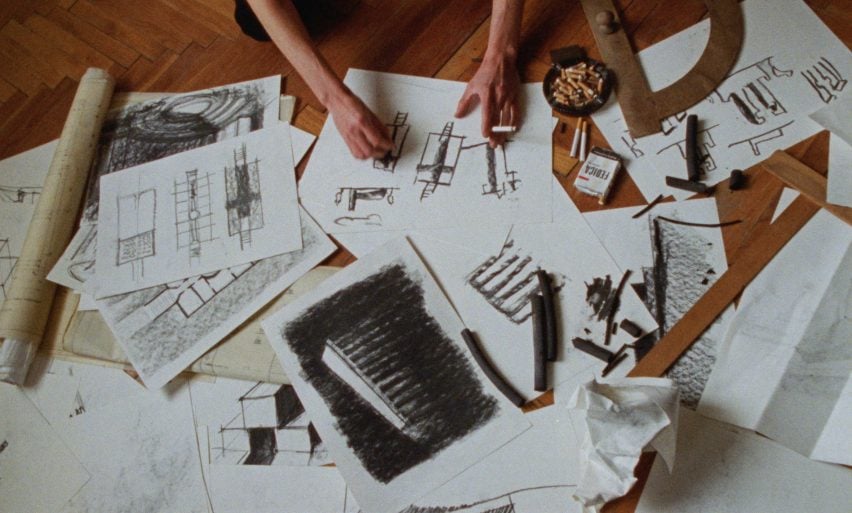
The independent film was shot on a budget of less than $10 million, making it imperative that no money was wasted and that the sets would be functional from the start.
“We were trying to figure out what we were going to do about the Institute, how we were going to shoot parts of it, what we were going to create,” Becker explained.
“To do that, we needed to design the building,” she added. “That was my first assignment, and it was going to be something to show the producers how we could do it and make the movie for this amount of money.”
She deliberately didn’t reference existing brutalist buildings, instead focusing on creating a brand-new design.
“I looked at contemporary buildings that play with light and sky, and underground designs, even [designs by] James Turrell,” she said.
“I didn’t look at period architecture as much; partly because I have a lot of that already in my head, and partly because I didn’t want to copy it.”
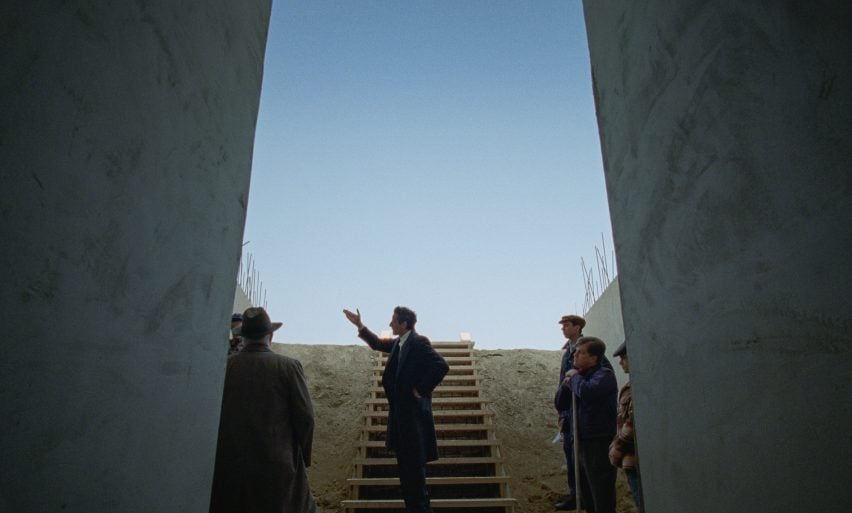
The script made it clear that the Institute would comprise a community centre as well as a Protestant chapel, but that its design would also incorporate Tóth and his wife Erzsébet’s (played by Felicity Jones) experience of being incarcerated in the Nazi concentration camps.
While Becker described this as a “big challenge”, it was also what led to a breakthrough in her design of the building.
“The big eureka moment came from trying to incorporate the concentration camps,” Becker said.
“I started looking at images of them, mostly bird’s-eye images of their plans but also interiors, and noticed that they were mostly – as is common in military bases and those kinds of very structured environments – kind of a T shape,” she continued.
“You would add the barracks on either side of the main road, then there’d be an intersection, and then it would continue. It was a T – but it was also a cross, and I really started thinking about the symbolism.”
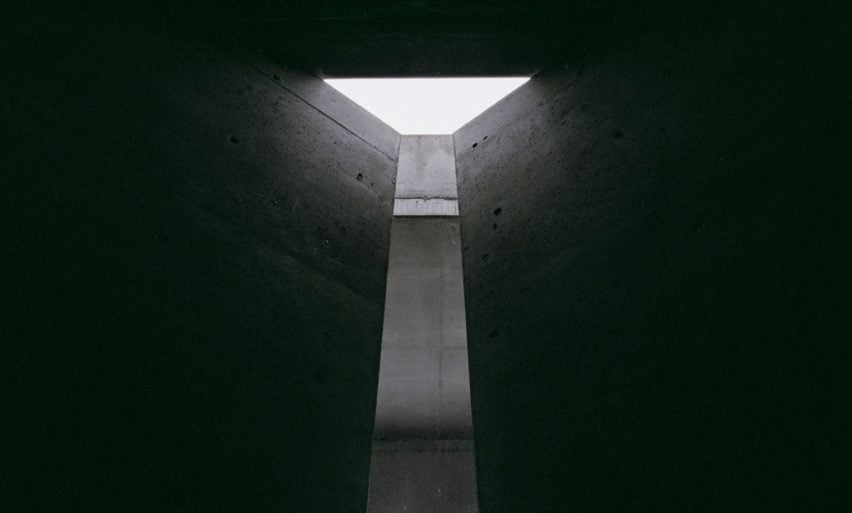
The resulting building is a monumental, towering structure that Becker says also drew on factory and crematorium design, another reference to the architecture of the concentration camps.
The Institute’s chapel, with a cross-design that is integral to the story, was shot on location in Hungary and some of the building was built as a model, using concrete to get the right materiality for the shots.
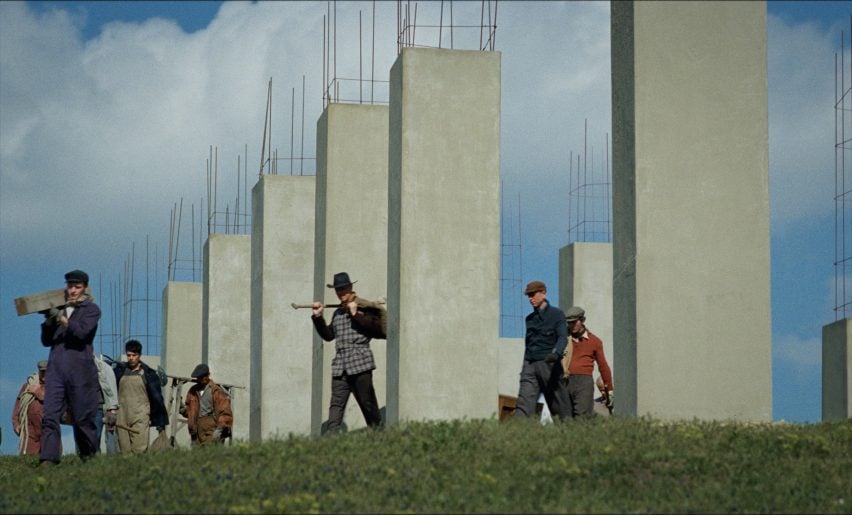
But the crew also erected sets for parts of the design.
“We built part of the staircase that descended into the ground, and part of the entrance,” Becker said. “We also built some of the support columns, things that would indicate the scale and aspects of the important parts of the building.”
Though the Institute is the central building in the film, it wasn’t the only striking set that Becker was tasked with designing.
To create the project with which Tóth first makes his mark in America – a library, also designed for benefactor Van Buren – Becker had to transform a glass conservatory into a library covered in shelves.
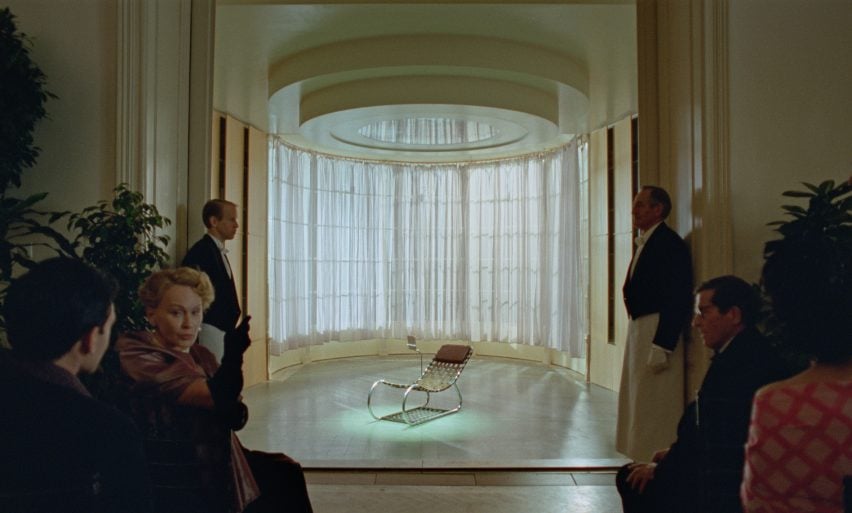
She came up with the solution of creating foldable, moveable shelves that actually moved.
“I had this inspiration that it was going to be cabinets that were going to be designed to create this forced perspective in the room, and then they were going to open up,” Becker said.
“The execution was hard – it had to look so beautiful, because it’s the moment when you realize László is an artist, and that’s such an important story point,” she added.
Corbet agreed that the library was one of the most important sets.
“It was very important that it had a real impact,” he said. “It’s like making a film about a fictional painter – if the paintings aren’t good, the whole thing falls apart.”
To design Tóth’s furniture for Van Buren’s library, notably a sleek reading chair, Becker drew on his background as a Bauhaus-trained architect.
“I used tubular steel because that was a material that was very much used by people that studied at the Bauhaus and those shapes were common,” she explained.
“A lot of people designed with them, and I looked at a lot of furniture just to make sure I wasn’t copying anybody.”
While The Brutalist focuses on a very specific time and place, Corbet believes the style is still relevant, and provocative, today.
“It seems that to this day, there is no more controversial style of architecture,” he said. “If you’re on Twitter or Reddit, it’s fascinating how so many folks are still so provoked by it.”
Other recent Dezeen film stories looked at the inspiration for Dune: Part Two and the Tokyo Toilets showcased in Wim Wenders’ film Perfect Days.
The Brutalist premieres in the US on 20 December and the UK on 24 January.
The photography is courtesy of Universal Pictures unless stated otherwise.

